by Sam Juliano
“Just as buildings in California have a greater need to be earthquake proofed, places where there is greater racial polarization in voting have a greater need for prophylactic measures to prevent purposeful race discrimination.
-Ruth Bader Ginsburg
She is the second woman ever to serve on the United States Supreme Court as an Associate Justice. At 84 she is the oldest member of the court and generally regarded as the leader of the liberal wing. A strident feminist and strong advocate for women’s rights she fought discrimination through much of her life, and in her younger years was an actual victim. As she approached eighty, this demure grandmother, weighing only ninety pounds, was looked on as a cultural icon for her audacious stands against a conservative male majority. Ruth Bader Ginsburg: The Case of R.B.G. vs Equality by Jonah Winter, with illustrations by Stacy Innerset is a picture book biography of a seminal figure in the judicial ranks that chronicles her earliest years, the influence of her beloved mother, through her college years where she met the love of her life and broke through long standing barriers connected to race, gender and role. With the combination of concise and riveting text and some of the most exquisite art in Innerst’s picture book career a biographical milestone has been achieved. It all begins as Winter presents the book with a judicial bookend which is in tune with what Ginsburg eventually became. She is seen as a little girl who hasn’t a clue of what her life would bring. Winter announces that the future Supreme Court Associate Justice endured a difficult life at a socially turbulent time, and these, alas are “the facts of the case.”
The early 1930’s saw a large influx of Jewish immigrants as a result of anti-Semitic persecution in Germany, and a prime place for relocation was none other than Brooklyn, New York. Some set up business in the Borough while others commuted to the garment district in Manhattan daily. Young Ruth’s earliest years were spent in a small apartment in a building with few furnishings, comparable to the fictional Kramdens of Bensonhurst. Ruth’s father never finished high school, but was still enterprising enough to have owned a fur shop before declining business forced him to become an employee in the same profession. Innerst’s drab maroon-gray decor and subdued tints signify near impoverishment, though a copy of The New York Times and a familial embrace and family portrait imply a tightly knit unit and a measure of literacy confirmed over the ensuing pages. Ruth’s intellectual role model is unveiled as her enterprising Mom, a high school graduate, prone to multi-tasking, an arduous domestic servant, who, much like the bibliophile Elizabeth Brown in Sarah Stewart and David Small’s 1995 picture book The Library, succeeded in reading and mopping floors simultaneously. Living at a time when women were highly discouraged from college enrollment, Ruth’s mother secured a job at fifteen years old to help pay for her own brother’s education before settling in to conform to her husband’s edict that “a woman’s place was in the home.” Yet, this homebound directive gave Ruth’s mom the opportunity to instill in her ever receptive offspring a love of books, imparted daily while the cookie jar was utilized for future education funding.
Innerst’s gouache, ink and photoshop tapestries include one startling double page spread of the young girl engaged in mythology volumes and Nancy Drew mysteries in a library located on top of a Chinese restaurant, where the scent of food waffled up to offer a sensory dimension to the voracious reader’s marathon sessions. With rooftop water tanks, fire escapes, a salon and a chicken market, etched in saturated hues, city congestion is negotiated in scrapes and wear, yet as urban dwellers can long attest to, the setting is strangely beautiful. Winter notes that violence and vandalism against Jews during the 1930’s and 40’s was not solely a European blight but occurred in America, and scene-specific to this biography in Brooklyn. Returning to the courtroom dynamic of the book’s dramatic ruse, the author bleakly notes: We now offer into evidence: Anti-Semitism experienced firsthand by Ruth-a sign outside a resort in Pennsylvania, seen from her parent’s car. It said: ‘No Dogs or Jews Allowed.’ This happened right here in America. Innerst pictorially transcribes this abomination highlighting a disconsolate Ruth eyeing the sign intimates that a person of Jewish heritage is regarded on the same level of respect as an animal. Innerst’s stark canvas is three-quarters mournful black in the automobile close-up, accentuating the unconscionable realization that even in Keystone State resort areas during that time Jews were reviled.
The illustrator depicts Ruth’s academic progress as a school girl in an old-fashioned dress holding a sheet of yellow-lined paper in front of a blackboard bordered with a cursive alphabet and the words Magna Carta. Her essay about the most celebrated document in English history and the Bill of Rights was one of the earliest indications that Ginsburg would pursue a career in law, though typical indecision at such impressionable ages made any speculation far from conclusive. Ruth liked playing the cello, editing the school newspaper and twirling a baton at school football games, captured by the artist in earnest vignettes, devoid of color bombast. Alas Ruth’s academic triumph of graduating Number 6 in a class of 700, for which she was awarded a New York State scholarship was tainted by the worst kind of tragedy. Winter notes in the most unlikeliest of scenarios that the cancer-ridden family matriarch passed away on Graduation day: Ruth was mourning the death of the person she loved most in the world, the person whose dream was to see Ruth go on to college, and become an independent woman. Innerst denotes Ruth’s room with unused cap and gown on bed and the bereaved graduate holding a picture of her beloved and selfless mom, depicting her grief in pictorial privacy.
Devastated but resolved to honor her mother in the most meaningful way she arrives at Cornell University, a place attended by her uncle and had social and financial matters been different where her mother would have been enrolled. Girls were outnumbered four to one at the institution, but Winter adds that the downside to academic prowess was that a girl often had to “pretend not to be smart” if she hoped to land a date. The artist’s marvelous, minimalist rust-red-tinted retro spread, draws attention to a sweater, the “C” on another, and Ruth’s cap and Cornell banner on her suitcase. The Photoshop pink bathroom sink and the sketch of Ruth hiding under it to avoid detection from boys turned off to fair sex bookworms is irresistible, though as chance would have it Ruth encountered Martin Ginsburg, the rare young man who liked, maybe even preferred his date was of a markedly cerebral slant. He admired her independence and career plans, and that she wasn’t prone to blabbering. Her college years coincided with the time of the McCarthy witch hunts, a fact that emboldened her resolve to practice law and emulate the brave lawyers who fought against those who would attempt to comprise our freedoms. Silhouettes depict Ruth in her constitutional law class, a father turning his back on his headstrong daughter after she determines she will become a lawyer irregardless of feminine scarcity in the profession. An automobile with a ‘Just Married’ sign on the back consulates her enduring relationship with her one true love.
Ruth gave her husband the vital assistance for him to graduate law school, after a grave illness that nearly took his life left him homebound. Ruth attended his classes and took notes, and to boot took care of him at home, while also attending to their newborn baby Jane. The fact that she had to work hard at and pass her own class and serve as editor of the Harward Law Review almost seemed beside the point.
Winter then intrudes upon the biographical narrative to document exhibits via letters A though G the unbelievable injustices surrounding Ruth before, during and after law school, and Innerst responds with austere sketch and silhouette vignettes on yellow paper that bring wordless context to the textual facts. She was either rejected or demoted for either being pregnant, using the college’s periodical room for being the wrong gender, being called on by the professor of a class for comic relief because she was the only woman, being interrogated at a dinner hosted by a law school dean, who stands by the notion that a capable man will always be preferred over a capable woman, and that no living quarters were provided for women at Harvard. After Martin is hired by a law firm in New York City, the family moves down to the Big Apple and Ruth transfers to Columbia. Ruth’s efforts to secure a position are met with stern opposition. She was after all a woman, a mother and Jewish. At Rutgers she discovers men are paid substantially more than women, but with another woman wins a lawsuit. She is ignored at faculty meetings as a sole woman, even after she became Columbia’s first female law professor.
As the years passed of course the laws and attitudes changed and Ruth assumed a position of leadership in the American Civil Liberties Union. She cut a new path towards gender equality. Winter notes that she was never out to change the world, only to negotiate her job as effectively as a man, but her success was changing long held injustices. Her remarkable rise continued when she was appointed to the U.S. Court of Appeals by Jimmy Carter, and finally at age sixty to the Supreme Court by President Bill Clinton. She became the second woman appointed to the court after the moderate Sandra Day O’Connor, named to the court by Ronald Reagan. Some of Innerst’s most striking art in the book includes Ruth sitting alone listening to a lawyers appeal as she listens, seated near a photo of Jimmy Carter, her Supreme Court appointment press conference with President Clinton, where an image of her hard-working and devoted mother stands as an eternal inspiration and an almost cartoonish lineup of the nine justices, all undecided and speaking among themselves, while ever the articulate firebrand, Ruth reads from a sheet of paper, which Winter describes in the text would be one of a number of her famous dissents of majority votes by the conservative bloc. After cancer surgery in 2009 Ginsburg is seen again returning to the court, undaunted by her latest health scare.
In a final courtroom steps canvas are Innerst includes cherished family photos and some sad reminders of the prejudicial obstacles she had to face through her life. Readers picking up Ruth Bader Ginsburg: The Case of R.B.G. vs. Inequality presently will be afforded the relatively rare opportunity to read a biography about a still living and still serving person, one whose iconic status is assured. A comprehensive glossary of legal terms, all of which were either broached in the text or a consequence of the legal intricacies, appears in the back matter along with an author’s note. In addition to the extraordinary dust jacket showing Ginsburg as a Supreme Court justice on the front and as a little girl in the narrative courtroom prologue, readers will find the special treat of a gold embossed styled scale of justice, with Ginsburg and her volumes of law books holding their own weight against her eight colleagues on the court. The tan base is a perfect aesthetic choice as well. The end papers, showing Ginsburg finding a book among stacks and walls covered with volumes is a splendid touch.
Ruth Bader Ginsburg was recently named one of The New York Times’ ten-best illustrated picture books of 2017, which represents a mighty accolade for Innerst and by extension for Jonah Winter. This exceptional and moving biopic should rightfully take its place among the very best out there on Ginsburg or any legal figure. It not only contends for best picture book biography of the year, but for the Caldecott committee a bonafide artistic candidate for the 2017 Caldecott Medal to be awarded in February of 2018. That Ginsburg is the subject is reason alone for celebration during these tempestuous times.
Note: This is the fifteenth entry in the 2017 Caldecott Medal Contender series. The annual venture does not purport to predict what the committee will choose, rather it attempts to gauge what the writer feels should be in the running. In most instances the books that are featured in the series have been touted as contenders in various online round-ups, but for the ones that are not, the inclusions are a humble plea to the committee for consideration. It is anticipated the series will include in the neighborhood of around 30 titles; the order which they are being presented in is arbitrary, as every book in this series is a contender. Some of my top favorites of the lot will be done near the end. The awards will be announced in mid-February, hence the reviews will continue until around the end of January or through the first week of February.








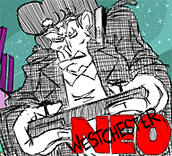



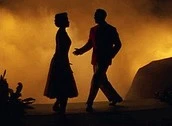
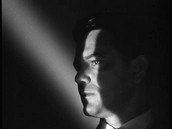

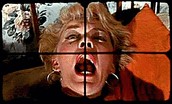










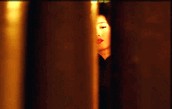

 Click on names for archives
Writers/Founders
Click on names for archives
Writers/Founders
Another tremendous Caldecott review Sam. The captivating art looks like a perfect fit for the subject. As far as biographies go this also looks first-rate.
Thanks so much Ricky! I’m inclined to agree with you down the line! 🙂
Remarkable review Sam. I saw another book about RBG. I think it is called “I Dissent.” I liked it too, but thought this one was the best.
Thank you James! I have also seen the other Ginsburg book and like it well enough too. The Winter/Innerst collaboration is quite special indeed!!!
The special thrill of this great choice and presentation, Sam, is to realize that heroic war stories are not confined to gun battles. Truly inspiring, for young and old!
Beautifully said Jim! The book is nobly conceived and executed and as such it is an inspiration. Thank you so much my friend!
Sam — Having Jonah Winter as the author, and Stacy Innerst as the illustrator is like having a literary Dynamic Duo team up for this book—RUTH BADER GINSBURG: The Case of R.B.G. vs. Inequality!
I’m extremely excited about this book and its message! I’m delighted that young people have the opportunity to learn about and celebrate — maybe even aspire to emulate — this type of advocate. I hope it finds it’s way into classrooms everywhere!
You said it Laurie! This is indeed a “Dynamic Duo” sort of pair and this collaboration has yielded an extraordinary work on one of our most admired public figures, one who has overcome social and health obstacles from her adolescence. It most assuredly does belong in every classroom! Thank you so much my friend!!!
Sam, I agree with you on the matter of this book being a first-class biography. It is a great introduction to this great American who rose from impoverishment to appointment to the highest court in the land. Your brilliantly written review points to it as an essential acquisition.
I do indeed feel it is an essential acquisition Frank. You state its eminence wonderfully. Thank you for the very kind words my friend.
What I appreciate most about your reviews are how you examine each page in the book, looking at the art and text. I’m sure Ruth Bader Ginsburg is pleased. Wonderful illustrations. She is an inspiration to all women.
Thanks for the exceedingly kind words Karen. I’d reckong the great lady is indeed mightily pleased if I might say so. Yes, a singlar inspiration. The illustration are stunning.
I saw another Ginsburg book,which I liked, but not nearly as much as this one.
Karen, thanks again. Yes, James (above) also compared the two RBG books, and found the Winter/Innerst special as I did.
YES lets celebrate RBG every day – every single day
Right on Patricia, she is worthy of daily appreciation and reverence. Thank you!
I picked up a copy of this book in late September at a local Barnes & Noble. One of the best written and illustrated biographies I’ve seen. RBG is a national treasure. Wonderful review.
Thrilled to hear you secured a copy Paula!! So true what you say about Ginsburg, and the book’s first-rate quality. Thanks so much for the kind words.
I was so happy when I first heard about this book, and after seeing it was even happier. Winter always tackles the most meaningful subjects. Innerst’s beautiful art just keeps getting better and better. Business for this title in the system has been brisk.
This review is further evidence of why this series is so invaluable for children’s book lovers. Brilliant.
As always your insightful comments bring so much to the table my friend. Thank you so very much!! 🙂